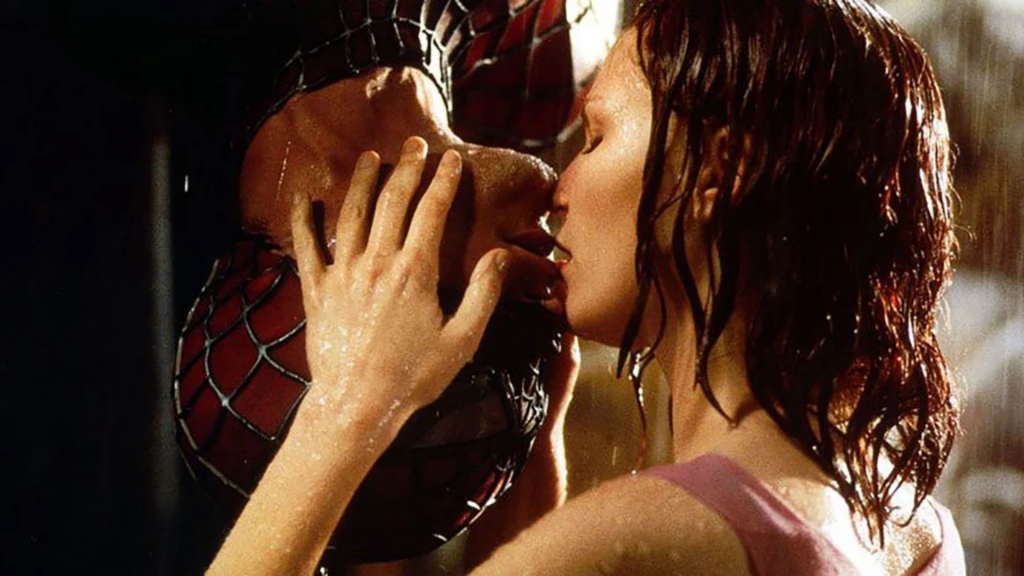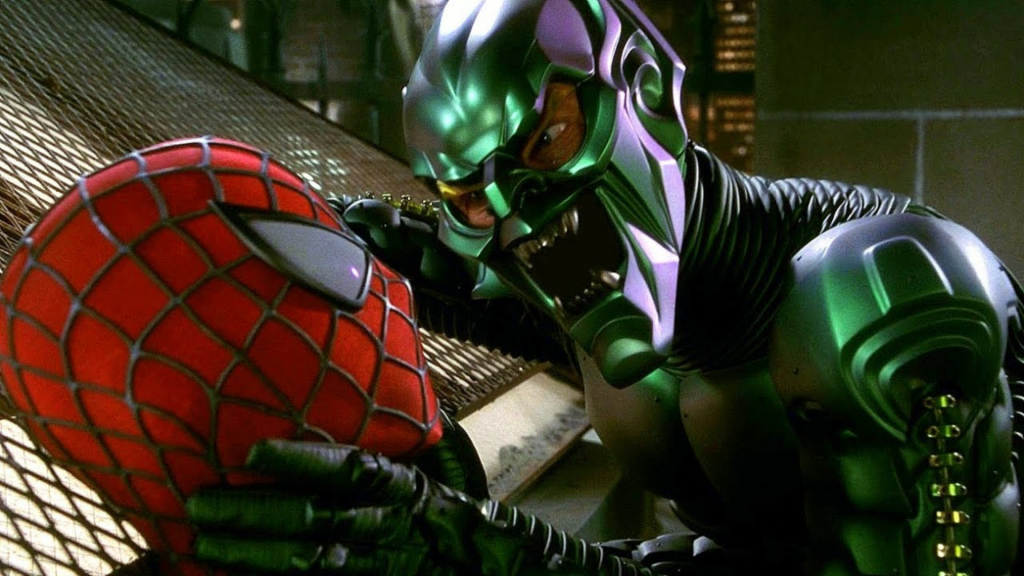Back in 2002, horror director Sam Raimi seemed like a strange choice to bring one of the world’s most iconic superheroes, Spider-Man, to the big screen.
Such doubts feel like a distant memory now. Raimi’s close-quarters cinematography, which calls to mind his work on the Evil Dead trilogy, translates beautifully. The film treats audiences with stunning tracking shots that help give the movie its unique visual style. When paired with Raimi’s penchant for practical effects and Danny Elfman’s ingenious musical score, Spider-Man remains one of the most auteur-led superhero films of all time.
So, why is it best remembered for the memes?
It’s no secret that shots from Spider-Man and its two sequels (one phenomenal, one dire) are commonplace across social media GIF boards, meme templates, and YouTube shorts. Willem Dafoe’s iconic performance as Norman Osborn is the most frequent sight, though the Venom-symbioted Peter Parker known as ‘Bully Maguire‘ is another strong contender. The abundance of memes about a movie that just turned twenty suggests that Raimi either did something very right or very wrong. Some dislike the trilogy for its sillier moments, such as YouTuber The Cosmonaut Variety Hour who famously published the video essay ‘Sam Raimi’s Spider-Man Trilogy: Worse Than You Remember.’ It is these same ridiculous elements however that make Spider-Man the purest filmic translation of a comic book ever put to screen.

Comic books are silly, particularly golden age comic books that tend to rely on tongue-in-cheek dialogue and ridiculous plot points. Raimi clearly has no interest in adapting the more serious versions of Spidey, as seen in comics like Kraven’s Last Hunt or the ultra-depressing, Dark Knight Returns-inspired Spider-Man: Reign. Instead, the director channels the goofy, sometimes unbearably cheesy energy of the 60s Spider-Man comics, giving his Spider-Man a unique personality that has stood the test of time.
Raimi’s Spider-Man doesn’t care for the deep, metaphor-laden monologues of Christopher Nolan’s Dark Knight Trilogy. Instead, central players like Mary Jane and Spider-Man himself say things that would be mortifying to say out loud in our reality. Tobey Maguire’s Peter Parker is particularly corny, playing up to the character’s ‘nerdy’ personality that has been slowly whittled away by the ‘cooler’ interpretations from Andrew Garfield and Tom Holland. Maguire’s banter is ripped straight from the comic books, with clangers such as “it’s you whose out Gobby, out of your mind!” Yikes.
Yet it’s these same cheesy lines that give Spider-Man such a unique flavour and a timeless quality. By contrast, you don’t see people talking affectionately about Ang Lee’s Hulk, a film from around the same time that takes itself far too seriously. Raimi knows exactly what makes the original comics so great and leans into their silliness. Though it doesn’t always work. The film’s extras in particular are often diabolically wooden and lack the expertise to deliver their clunky lines in a compelling way, for example. However, the conviction with which Raimi commits to the tone of this cheesy mess is far more compelling than any of Sony’s later cynical attempts to cash in on what is popular, such as The Amazing Spider-Man, Venom, and most recently, Morbius.
Spider-Man lets its actors play around with their characters. It doesn’t limit them to portraying real people in a realistic way, resulting in less naturalistic performances than we’re used to these days. The performances in Spider-Man are a far cry from the grim trauma of Hugh Jackman’s Wolverine in Logan or the enduring earnestness of Christian Bale’s Batman, who both feel rooted in reality. By contrast, Willem Dafoe’s Green Goblin is by far the most menacing and hilarious Marvel villain ever put to film, chiefly because the actor isn’t constrained by concerns of realism or seriousness. Dafoe clearly relishes every scene he’s in; stomping around, ad-libbing little movements here and there, and delivering his corny lines in the most unconventional way possible. His facial expressions give the film an almost uncanny quality, and the actor perfectly portrays a silly-yet-frightening golden age villain in his way, unbound by conventional appeals to sincerity.
Even the costumes in Spider-Man appear to be taken directly from the pages of a comic book. Though Dafoe’s armoured Green Goblin takes some stick for resembling a Power Rangers villain, its abject silliness works perfectly in the world of Raimi’s Spider-Man. Long before superhero costumes had to be logically explainable with militaristic armour plating and Stark technology, Maguire’s Peter was running around in the best Spidey suit of all time. The raised webbing, the jagged eyes, and the bright tones of blue and red truly make this Spider-Man resemble his comic-counterpart more than any other, with only minor modifications to make him pop on screen.

While modern superhero films feature characters and storylines that hark back directly to their comic book source material, Raimi pays homage to Stan Lee and company in a more organic way. By adopting the tone of a comic book, Spider-Man feels authentic, as if the audience is watching the pages of a Spidey story brought to life. The tone, the dialogue, the costumes, and the performances all culminate in a movie that consistently demonstrates a profound affection for its source material. Even its colour palette is unabashedly bright, almost as if the lens has been coloured by Spider-Man co-creator Steve Ditko himself.
If Spider-Man teaches us one thing, it’s the importance of maintaining a film’s verisimilitude. As a director, it doesn’t matter how silly the world you’ve created is, so long as you stick to the rules of that world and create characters and scenarios that feel authentic within it. Sam Raimi achieves this in spades with the original Spider-Man, crafting a movie that is both auteur-led and which pays homage to its source material in the best way possible. Two decades on, it is so much more than the memes that spawned from it.
The film clearly has its fans, not least due to the reappearance of Tobey Maguire as Peter Parker in Spider-Man: No Way Home, who steals the show alongside his ‘amazing’ counterpart, Andrew Garfield. Raimi, too, remains a popular and well-known director for his singular artistic vision, so much so that he will return to direct another Marvel hero in Doctor Strange in The Multiverse of Madness this month.
Spider-Man remains a fantastically corny, heartfelt movie that unapologetically presents its own vision of the beloved character. Raimi knew what kind of superhero movie he wanted to make, and he made it. For that reason, Spider-Man will be remembered fondly forever.
Words by Nathanial Eker-Male
Support The Indiependent
We’re trying to raise £200 a month to help cover our operational costs. This includes our ‘Writer of the Month’ awards, where we recognise the amazing work produced by our contributor team. If you’ve enjoyed reading our site, we’d really appreciate it if you could donate to The Indiependent. Whether you can give £1 or £10, you’d be making a huge difference to our small team.
